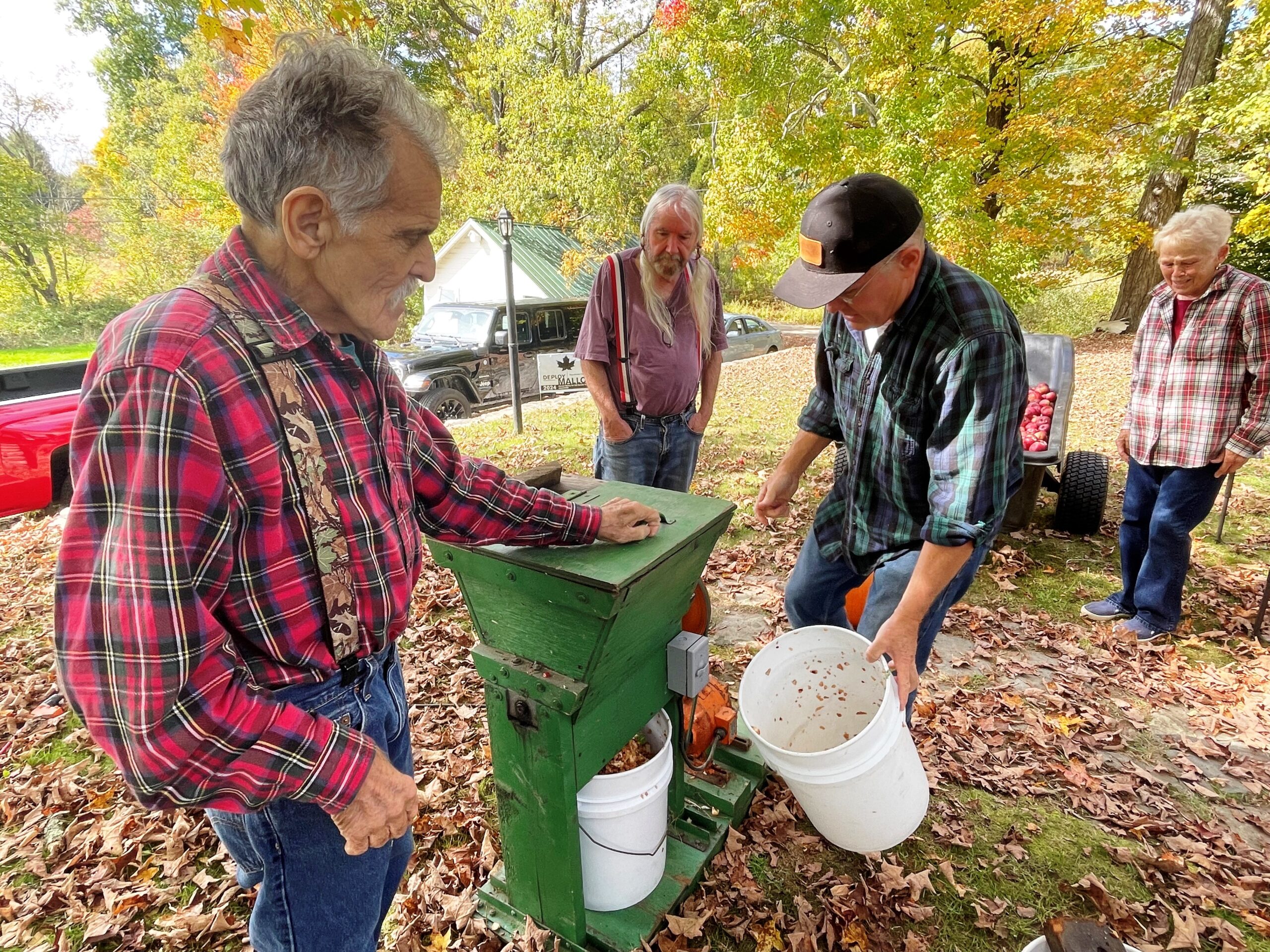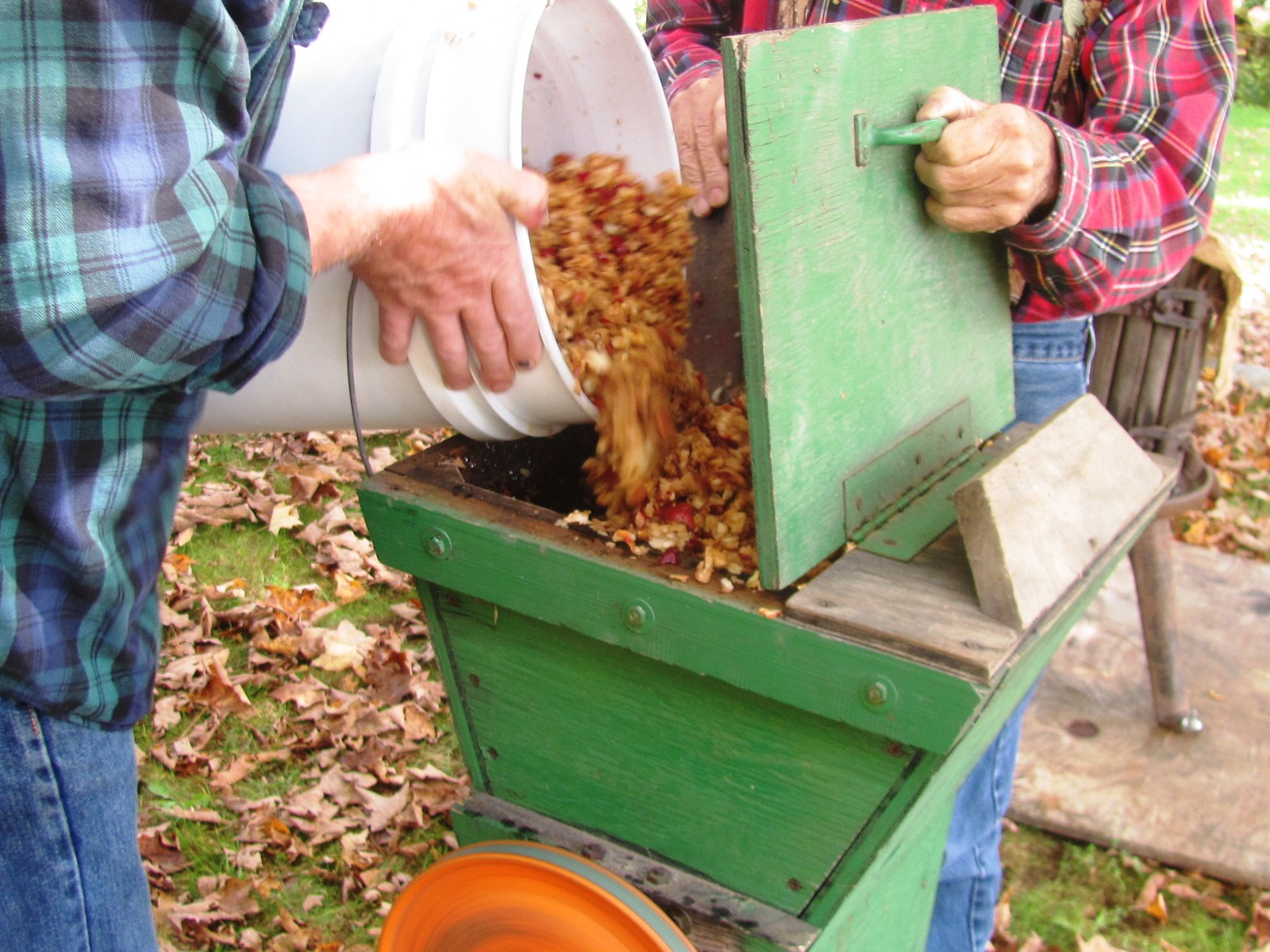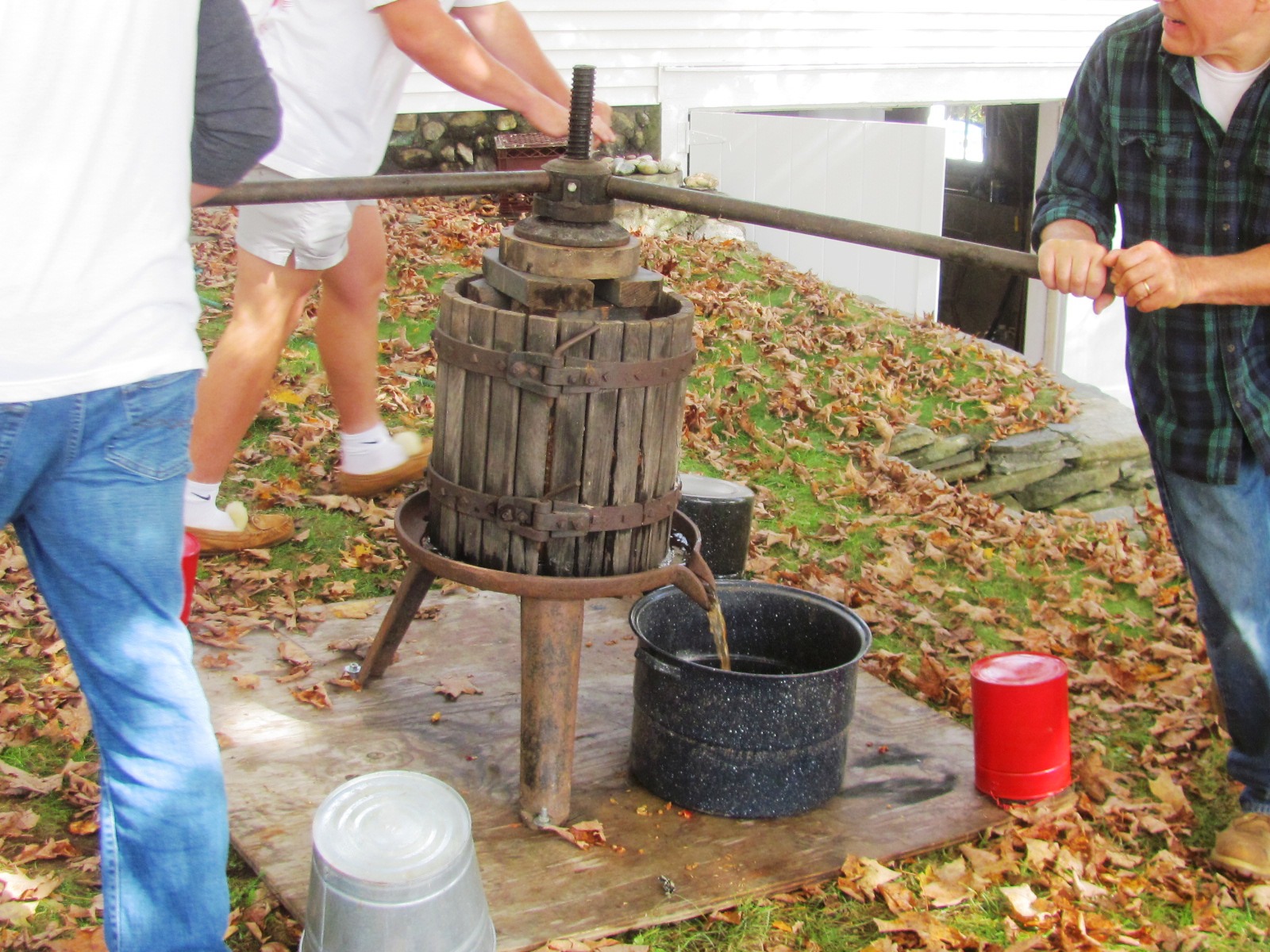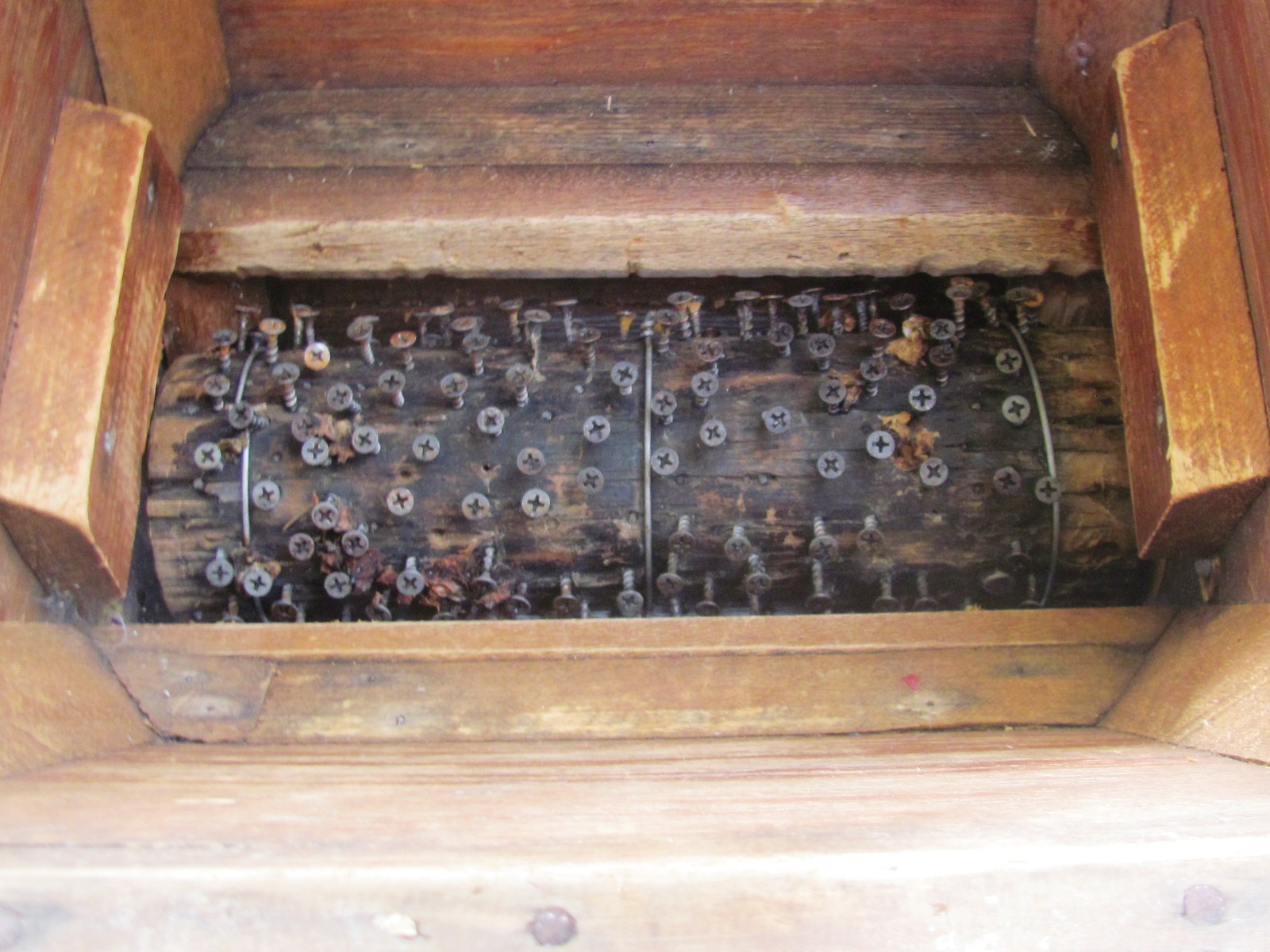 Bob and Susie Turco and I have been friends since my high school days. When I first knew them, they lived in the little house next to the library. I would often stop by when walking home from high school. As the pages of the calendar turned, we went our separate ways.
Bob and Susie Turco and I have been friends since my high school days. When I first knew them, they lived in the little house next to the library. I would often stop by when walking home from high school. As the pages of the calendar turned, we went our separate ways.
Last week, Bob invited me to stop by on Sunday. His son Justin was bringing his apple grinder and cider press to make cider. After Kendall church, I stopped by. It was a beautiful fall day.
When Bob was doing his farrier work, he took the cider press as partial payment. The apple grinder he built from scratch. His grinder is classic Yankee ingenuity.
How it was built
For the grinder, Bob took a round and straight piece of limb wood, through which he bored a hole lengthwise. Then he put an iron rod through the center. The outside diameter of the limb has hundreds of sheetrock screws driven halfway in. You load the apples in the top of the hopper. Unless you want your knuckles softened, a block of wood is used to push the apples down.

One end of the rod stuck out an inch or so, to which a pulley was fastened. Below this, Bob used something like an old washing machine motor with another pulley. A fan belt was placed around the two pulleys. Turn the power on and you are ready to grind apples.
The grindings drop into a five-gallon bucket. Justin passed the apple pulp though the grinder three times. Everything of these unwashed apples gets ground; skin, stems, and seeds. The pomace was dumped over the bank for deer to enjoy.
The cider press
Justin lined the press with burlap. An iron leadscrew rises vertically from the center. Load the pulp into the burlap-lined, wooden-slatted barrel. A two-piece cover is placed on top of the slotted barrel, then some cribbing, with a huge nut on top of the leadscrew. You screw the nut down to squeeze the juice out of the pulp. Three-foot long extension bars on the nut provided more pressure. Those turning the extension bars worked hard. I went home with two gallons.
Munchies

Susie and her granddaughters prepared a wonderful fall fare. There was a large pot of chicken soup with gluten-free noodles. Another pot was chicken and rice, crackers on the side. We dipped our cups in the cider. We had fresh donuts and warm apple crisp with vanilla ice cream on the side to top it off.
Woodsman
I don’t know a better woodsman than Bob. He’s an excellent tracker, knows wild mushrooms and conks, and how to read sign. A couple years ago, Squatty wounded a monster buck. Bob took up the trail, tracking him several miles before he was found. These are skills few have today.
Furs, ginseng, and antlers
For many years beginning in the late 1970s, Bob had his fur buyer’s license. Bob would take his furs to the city to get the highest price. For several years, Bob had his ginseng license. He bought ginseng dug by pickers from Vermont and New Hampshire. This he also sold in the city.

Bob bought antler sheds from moose and deer. In northern New Hampshire and Maine are shed hunters. Bob put an ad in a sportsman magazine that he was buying sheds. His phone rang off the hook. Shed hunters spend hours and hours in the woods in late December and January. This is when moose and deer shed their antlers. Bob drove as far as Jackson Hole, Wyo., to sell his antlers. It was very profitable. Bob provided well for his family.
Bob and I both made the right decision as how to make a living. Buy here, sell there.
Instead of an old saying, I offer my thoughts. “I love Vermont and her people.”